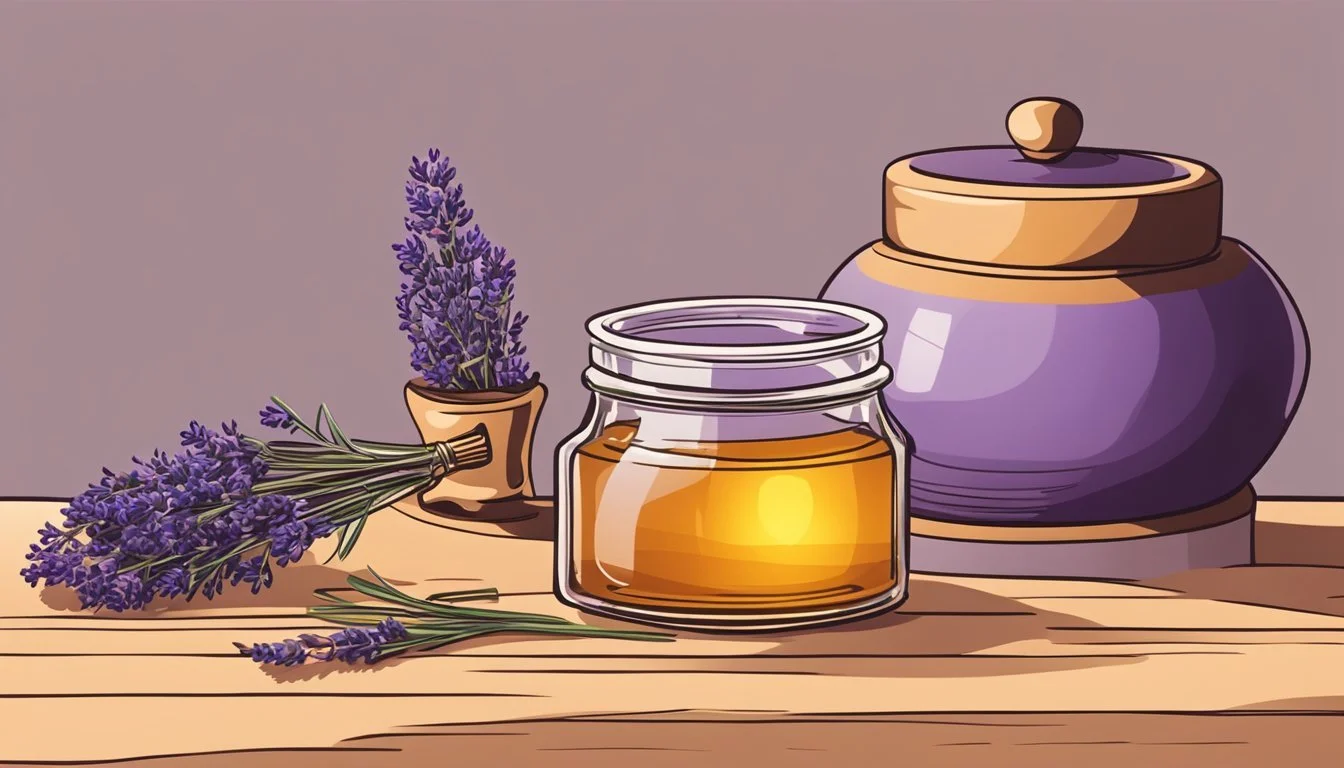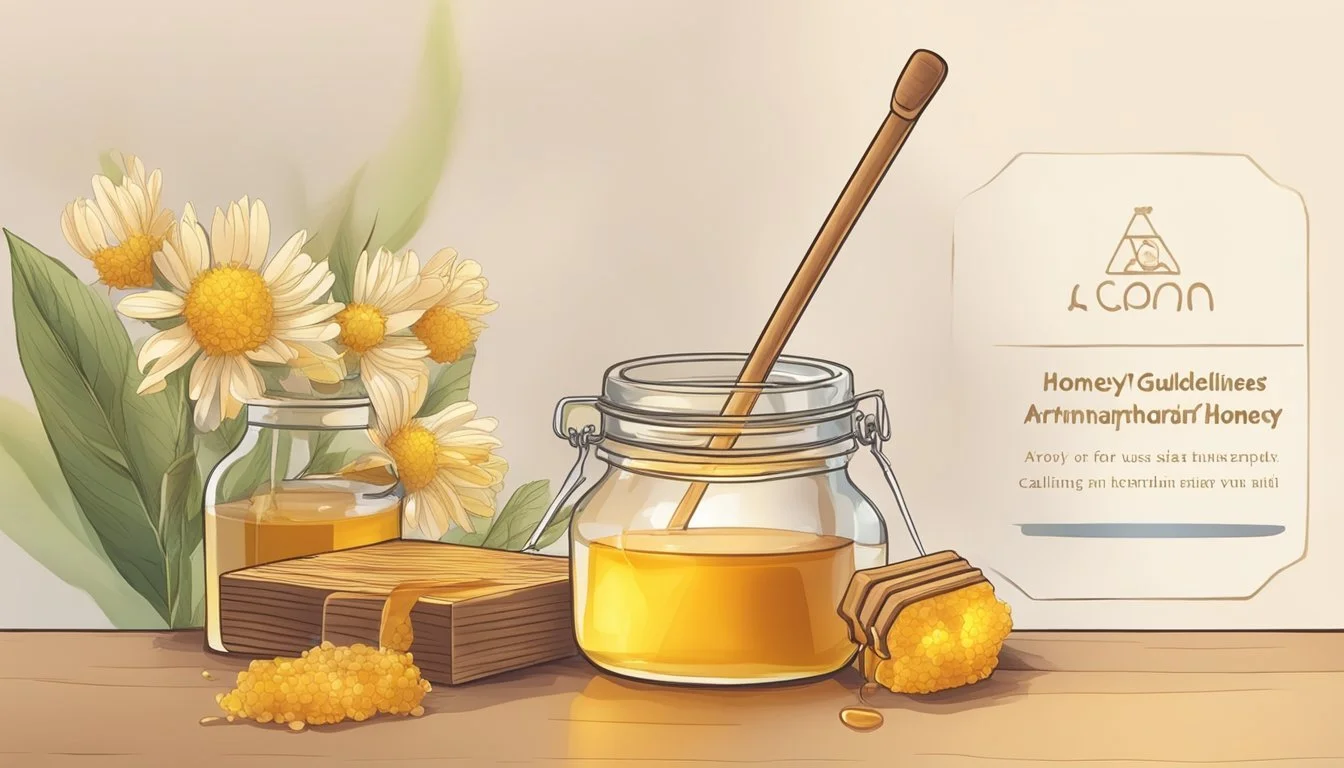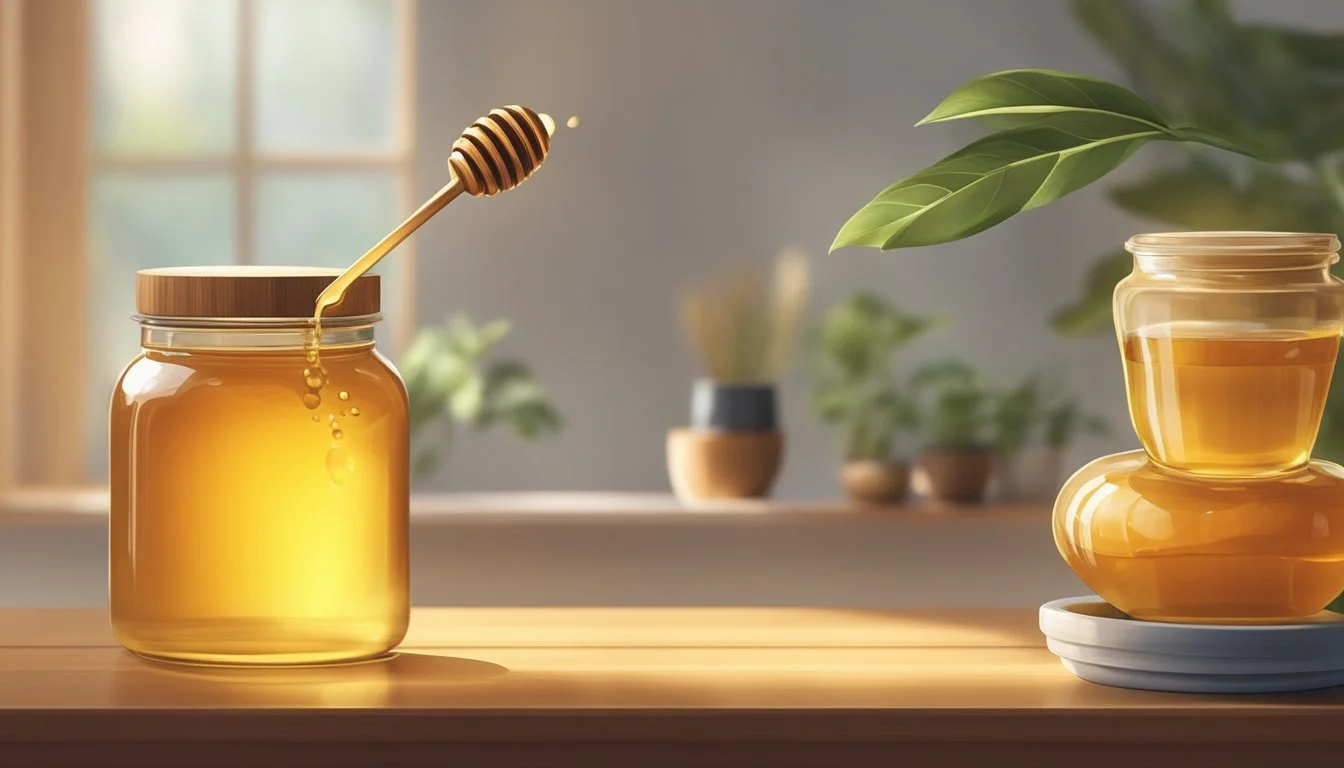The Use of Honey in Aromatherapy
Enhancing Relaxation Techniques
Aromatherapy is a holistic healing treatment that uses natural plant extracts to promote health and well-being. Honey (What wine goes well with honey?), a natural substance produced by bees, has found its place in this ancient practice, not just as a sweetener but as a key ingredient in enhancing the therapeutic effects of aromatherapy. Its unique properties contribute to the overall sensory experience, often used in blends and preparations for relaxation purposes.
Relaxation techniques often incorporate various aromatics to soothe the mind and body, and honey's inclusion in these practices exemplifies its versatility outside of culinary uses. Its ability to hold and release the scent of essential oils lends itself well to creating a lasting, pleasing aroma. This quality improves the effectiveness of relaxation rituals, such as spa treatments and massages, where it helps to alleviate stress and foster a peaceful environment.
As an adjunct to essential oils, honey aids in the delivery of aromatherapeutic benefits by providing a medium that both carries the essence and nourishes the skin. Recognizing its value in promoting well-being, therapists and wellness practitioners integrate honey into their practices, not only for its fragrance but also for its soothing and hydrating effects on the skin, enhancing the overall restorative experience of relaxation practices.
History of Aromatherapy
Aromatherapy has a storied past, interwoven with the medical practices and spiritual traditions of ancient civilizations. The use of aromatic plants traces back to ancient Egypt, where they performed the distillation of essential oils. Impressively, the Egyptians were utilizing these compounds for their antibacterial and preservative qualities as well as in their sacred rites.
Similarly, other cultures such as in India and China harnessed flora's therapeutic qualities. Specifically, the Chinese incorporated essential oils into their traditional healing systems, harmonizing one's health both physically and mentally.
The process of distillation, which is central to producing essential oils, became considerably refined in the Middle Ages. Advancements in this technology allowed for more potent and pure oils, contributing to the spread of aromatherapy's popularity across diverse regions.
By the Renaissance era, there was a notable resurgence in the study of herbal medicine and plant-based remedies, which further propelled the use of aromatic plants. The innovators of this period laid the groundwork for modern aromatherapy by exploring and documenting the multitude of health benefits of essential oils.
Ultimately, it was in the 20th century where aromatherapy began to crystallize as a formal practice, especially in Western societies. Medical professionals like Jean Valnet played pivotal roles in introducing essential oils as viable options for treating injuries, which highlighted their efficacy beyond just the spiritual or relaxation realms.
In essence, the history of aromatherapy is a tapestry of knowledge that has evolved, but always relied on the intrinsic properties of plants and distillation processes to support well-being and relaxation practices.
Fundamentals of Aromatherapy
Aromatherapy utilizes natural extracts, mainly essential oils, for their therapeutic properties to promote physical and psychological well-being. This section delves into the specifics of essential oils and the role of carrier oils in their application.
Essential Oils and Their Properties
Essential oils are concentrated plant extracts obtained through distillation, expressing the natural fragrance and therapeutic properties of the source. Each oil has a unique chemical composition affecting its aroma, absorption, and effects on the body. Popular essential oils include:
Lavender: Known for its calming and relaxing properties.
Peppermint: Often used for its invigorating and cooling sensation.
Eucalyptus: Respected for its respiratory benefits.
Tea Tree: Valued for its antimicrobial and anti-inflammatory qualities.
Chamomile: Associated with soothing and anti-anxiety effects.
Jasmine: Applied for its potential in uplifting mood and relieving stress.
Ylang-Ylang: Believed to help with nervousness and skin conditions.
Citrus Oils (lemon, orange): Commonly used for their refreshing and purifying characteristics.
Carrier Oils and Dilution
Carrier oils, like almond oil or coconut oil, are necessary to dilute essential oils before topical application, reducing the potential for skin irritation and allowing for safe usage. Dilution is a crucial step in aromatherapy practice; essential oils are potent and should not be applied to the skin at full strength. A common dilution guideline is:
1% dilution: For children, elderly, or facial applications.
2-3% dilution: For general adult use in body lotions, oils, and creams.
For an easy reference, a 2% dilution translates to about 12 drops of essential oil per 1 ounce (30 mL) of carrier oil. Carrier oils carry their own therapeutic properties and can enhance the overall effect, with some common ones being:
Almond Oil: Light and easily absorbed, suitable for most skin types.
Coconut Oil: Moisturizing properties, may solidify at cooler temperatures.
Methods of Using Aromatherapy
Aromatherapy harnesses the therapeutic properties of essential oils through various methods to promote relaxation and well-being.
Diffusion Techniques
Diffusion is a widely used method for enjoying the benefits of aromatherapy. Aromatherapy diffusers distribute essential oil particles into the air, creating a fragrant environment conducive to relaxation.
Heat Diffusers: Utilize heat to gently vaporize oils, often with a candle or electric heat.
Ultrasonic Diffusers: Use water and ultrasonic waves to create a fine mist carrying the oil particles.
Topical Application
Topical application allows essential oils to be absorbed through the skin, providing targeted relief and relaxation.
Massage: Essential oils are diluted with carrier oils for massages, which combine the sense of touch with aromatherapy benefits.
Baths: Adding oils to bathwater can create a spa-like experience, beneficial for both the skin and the senses.
Precautions must be taken to dilute essential oils appropriately, as they can be potent and may cause irritation if applied directly to the skin.
Inhalation and Other Methods
Inhalation is a direct approach to aromatherapy.
Steam Inhalation: A few drops of essential oil added to hot water for inhalation can relieve respiratory issues and sinus congestion.
Other Methods: Essential oils can also be used in creating herbal teas or tinctures, often combined with herbal honey, which serves both as a sweetener and as a medium to infuse the oil's properties.
Benefits for Mind and Body
Incorporating honey and various essential oils into aromatherapy practices offers tangible benefits for both mental clarity and physical comfort. The following subsections outline the specific advantages for stress and anxiety relief, improved sleep, and pain management.
Stress and Anxiety Relief
Honey infused with calming essential oils like lavender oil and bergamot can play a significant role in reducing stress and anxiety. Lavender oil, renowned for its soothing properties, can help lower stress levels and promote a sense of calm. Bergamot, on the other hand, may improve mood and concentration, assisting in the reduction of anxiety symptoms.
Lavender Oil: Decreases stress and induces calm
Bergamot: Enhances mood and supports concentration
Sleep and Insomnia
Essential oils like chamomile and lavender aid in combating sleep issues and insomnia, promoting restful slumber. Chamomile essential oil is particularly effective, known for its mild sedative effects that can encourage a quicker onset of sleep and a longer, uninterrupted rest period.
Chamomile Essential Oil: Offers mild sedative effects for improved sleep quality
Lavender Oil: Assists in relaxation and restful sleep
Pain Management
Aromatherapy with honey blends that include eucalyptus and peppermint oil can contribute to pain management. Eucalyptus essential oil is reputed for its anti-inflammatory properties, which can help alleviate pain. Peppermint oil is commonly used for its cooling sensation, which can distract from pain and has potential analgesic properties.
Eucalyptus Essential Oil: Anti-inflammatory properties aid in reducing pain
Peppermint Oil: Cooling effects can help manage and relieve pain
Safety and Precautions
When incorporating honey into aromatherapy and relaxation practices, safety should never be an afterthought. It requires careful consideration of potential adverse reactions and the importance of consulting health professionals, particularly for those who may be more vulnerable, such as individuals with allergies or pregnant women.
Avoiding Adverse Reactions
One must ensure that the honey used is pure and free of contaminants. As honey is a natural substance, its compositions can vary, and it may contain particles that can cause allergic reactions such as redness, hives, or irritation. To avoid such responses, it is crucial to:
Perform a patch test on a small skin area before fully incorporating honey into aromatherapy practices.
Be mindful of the label and regulation standards to verify the quality and purity of the honey purchased.
Follow clinical trials and scientific research that provide guidelines for the safe use of honey in therapeutic practices.
Consulting Health Professionals
Before adding honey to relaxation routines, individuals should seek advice from qualified practitioners, especially if they have pre-existing health conditions or are pregnant. A conversation with a doctor or consultant should cover:
Any known allergies that might be exacerbated by the use of honey.
Safety precautions during pregnancy, as certain natural compounds may have contraindications.
Understanding the limits and proper use as set by regulatory authorities to ensure health and safety.
Honey adds a unique element to aromatherapy and relaxation, but only when used responsibly and with due diligence to safety protocols.
Special Applications of Aromatherapy
Aromatherapy's versatility extends beyond relaxation, offering therapeutic benefits for physical and mental health across various practices, including skincare and integrative medicine.
Aromatherapy in Skincare
When incorporated into skincare routines, aromatherapy can deliver significant therapeutic benefits. Essential oils, often a core element of aromatherapy, help support skin health by potentially reducing symptoms of acne and promoting skin healing. For instance:
Tea Tree oil: Traditionally used for its antibacterial properties, making it an effective component for treating acne.
Lavender oil: Known for anti-inflammatory and soothing properties, aiding in skin healing and calming irritation.
Skincare products like scrubs, particularly sugar scrubs infused with essential oils, are not just exfoliating but also provide a sensory experience that can alleviate stress and potentially improve memory retention.
Integrative Medicine
Aromatherapy finds its place within integrative medicine as a complementary therapy. It is strategically employed alongside conventional medical treatments to manage symptoms such as nausea, vomiting, and depression, enhancing overall patient care. In these settings, therapists may use aromatherapy in various ways:
Inhalation: This method involves breathing in essential oils, often through a diffuser, which can help with nausea relief.
Topical application: Massage therapists often combine essential oils with carrier oils to apply directly to the skin, not only providing the therapeutic effect on the area of concern but also offering the relaxation benefits of the massage.
By emphasizing the role of the olfactory system and its capacity to influence the individual's well-being, these practices support the body's natural healing processes and promote a balanced state of physical and mental health.
The Role of Honey in Aromatherapy
In the realm of aromatherapy, honey serves as a versatile agent, enhancing both the therapeutic potency and olfactory experience. It not only incorporates the sweetness of fructose but also ameliorates bitter aromas, making natural remedies more palatable.
Natural Remedies and Preparations
Raw honey is a natural substance often used in aromatherapy preparations for its soothing properties. It is comprised of fructose, glucose, and various other natural sugars, as well as organic acids, enzymes, and minerals. This composition contributes to honey's ability to moisturize the skin, making it a common ingredient in homemade aromatherapy products like scrubs and face masks.
Moisturizing scrubs: A blend of raw honey and carrier oils such as sweet almond oil can exfoliate and hydrate the skin.
Facial masks: A combination of raw honey, essential oils like Melissa, and other ingredients can be tailored for different skin types and issues.
Raw honey can also serve as a base for tinctures or as an additive to enhance the flavor of other natural remedies.
Leveraging Honey's Aromatic Properties
Honey's aromatic properties can play a pivotal role in creating a relaxing atmosphere. Its natural fragrance can be quite comforting, invoking a sense of well-being when used in various applications:
Candles: Honey-infused candles release a warm, sweet fragrance that can help foster a relaxing environment.
Essential oil blends: When mixed with essential oils such as Melissa, which is known for its calming effects, honey can add a subtly sweet undertone that may enhance the overall sensory experience.
The aromatic qualities of honey can also counterbalance the bitterness of some essential oils, making them more enjoyable to inhale during aromatherapy sessions. This attribute aids in creating a more pleasant and effective aromatic blend, contributing to relaxation and a sense of well-being.
Scientific Perspectives and Research
Honey is widely recognized for its potential therapeutic properties, and its use in aromatherapy and relaxation practices has gained interest. Research indicates that the scent of honey can impact the olfactory system, which is directly connected to the limbic system, an area of the brain involved in emotion, behavior, and long-term memory.
Scientific studies have explored honey's influence on relaxation and stress relief. The aroma of honey, with its natural sweetness, may stimulate the release of serotonin, a neurotransmitter that contributes to the sensation of well-being and happiness.
Regarding the brain, research suggests that the glucose found in honey can provide an energy source for its functions. This link between glucose and brain activity may support cognitive aspects of relaxation practices.
Clinical trials have begun to investigate the integrative use of honey in therapeutic settings. Initial findings show promise for honey's role in enhancing relaxation responses, though more rigorous trials are required for definitive conclusions.
Key Component Role in Aromatherapy Olfactory System Transmits aroma to the brain Limbic System Processes emotions and relaxation Glucose Provides energy for brain functions
The current body of evidence presents honey as a complementary agent in relaxation practices, with its aromatic properties possibly influencing psychological wellness. Overall, while historical usage and anecdotal evidence support honey's role in relaxation, it’s the scientific approach through well-structured research that will ultimately validate these practices.
Conclusion
In the practice of aromatherapy for relaxation, honey has been less highlighted compared to other essential oils. Nevertheless, honey's natural essence does play a subtle role in the sensory experience of some aromatherapy treatments. Looking at the more prevalent essential oils:
Lavender essential oil is renowned for its relaxation properties. It is often utilized in aromatherapy for its ability to alleviate anxiety and improve sleep quality.
Lemon oil is considered an invigorating scent that can enhance mood and purify the air.
Vetiver, with its grounding aroma, is employed to promote calmness, often aiding in relaxation practices like meditation.
Tea tree oil is recognized for its decongestant properties, contributing to a clearer breathing environment that can facilitate relaxation.
When essential oils are used for children, caution is paramount. Diluted concentrations and certain oils, such as lavender or tea tree oil, might be favored due to their milder nature.
The integration of these oils into relaxation practices reveals a multi-dimensional approach:
Sensory Stimulation:
Aroma's impact on mood.
Physical Benefits:
Potential decongestant properties.
Psychological Effects:
Enhancement of meditation practices.
While honey is not typically mentioned as commonly as lavender or lemon oils in literature, combining its sweet essence with these essential oils may create an enriched aromatherapeutic environment conducive to relaxation. Yet, practitioners should always prioritize safe and effective use of essential oils, corroborated by scientific evidence, to ensure the well-being of all individuals.








